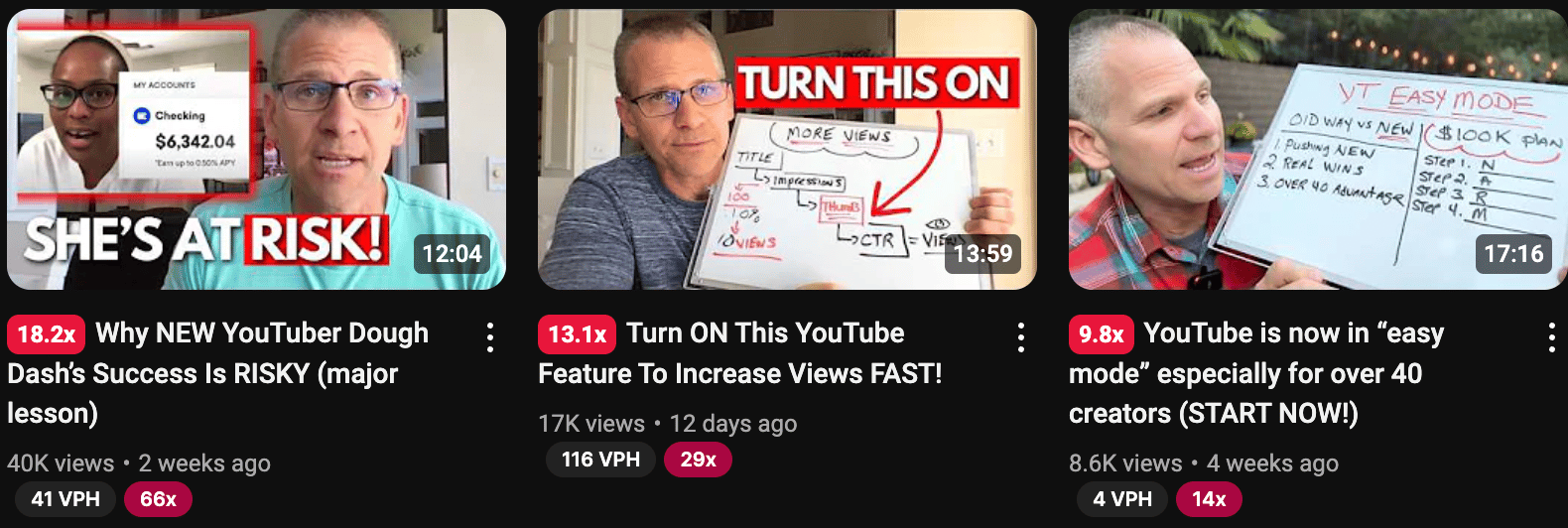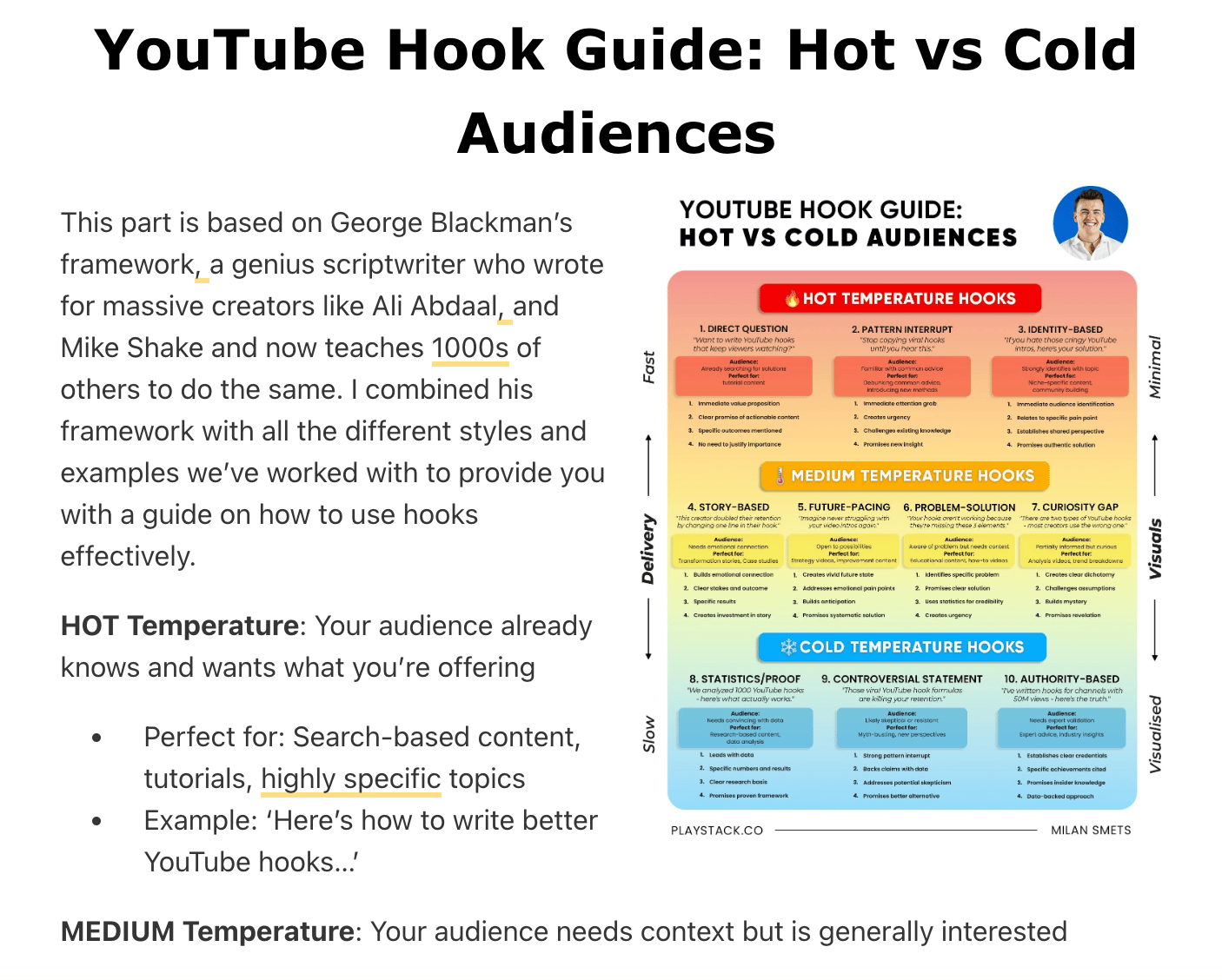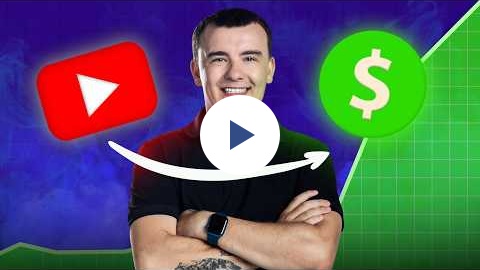The #1 way to increase retention
.jpeg)
Hey Reader,
Lots of you addressed their concerns about their videos not getting the traction they used to get.
We know that YouTube prioritizes retention of your videos, they want people to stay on the platform as long as possible and will reward you if you manage to keep people watching.
It's not your fancy editing or trendy music that makes people stay. You need people to get through the hook and intro first, this is where the biggest drop happens.
In this newsletter, I'll explain how you can do exactly that, depending on your audience and your goal.

Part of what I do daily is consume a lot of content and here are some of my favorites:
We created a full YouTube Idea Bank with all the previous outliers.
- Creator Booth - How Small YouTubers Are Making BIG Money In 2024
Storytelling plus visualizing the problem effectively, his advice is very genuine. - Mad hat - Cybersecurity Certificate Tier List (2023)
The channel is very niche, targeting cybersecurity people. The video is a popular format of tier lists and it's backed up by authority and data. - Live Video School - Turn ON This YouTube Feature To Increase Views FAST!
Thumbnails are very authentic with the whiteboard. Also "older" people, are more trusted versus kids like me...

YouTube Hook Guide: Hot vs Cold Audiences

This part is based on George Blackman’s framework, a genius scriptwriter who wrote for massive creators like Ali Abdaal, and Mike Shake and now teaches 1000s of others to do the same. I combined his framework with all the different styles and examples we’ve worked with to provide you with a guide on how to use hooks effectively.
HOT Temperature: Your audience already knows and wants what you’re offering
- Perfect for: Search-based content, tutorials, highly specific topics
- Example: ‘Here’s how to write better YouTube hooks…’
MEDIUM Temperature: Your audience needs context but is generally interested
- Perfect for: Educational content, entertainment, and broader topics
- Example: ‘Want to know why some YouTube videos explode while others flop?’
COLD Temperature: Your audience needs convincing or might be skeptical
- Perfect for: Controversial topics, new concepts, high-stakes claims
- Example: ‘Everything you’ve heard about YouTube hooks is wrong, and I can prove it…’
Let’s break down 10 hook types by temperature…”
For each type, I will explain why it’s temperature, who it is for, how to deliver it and what it will achieve.
🔥 HOT TEMPERATURE HOOKS
Delivery: Fast, direct
Visuals: Minimal, direct text
1. Direct Question Hook
Audience: Already searching for solutions
Perfect for: Tutorial content
Example:
"Want to write better YouTube hooks? Here are the 10 formulas we use for our 7-figure clients. Each one is tested across thousands of videos and proven to increase retention by at least 40%. I’ll show you exactly how to write each type, when to use them, and most importantly, how to match them to your content. The best part? You can implement these right after watching this video. Let’s dive into the first formula…”
Why it works:
- Immediate value proposition
- Clear promise of actionable content
- Specific outcomes mentioned
- No need to justify the importance
2. Pattern Interrupt Hook
Audience: Familiar with common advice
Perfect for: Debunking common advice, introducing new methods
Example:
“Stop writing your YouTube hooks right now. Seriously. Put down your script and listen carefully, because that formula you’re using? It’s probably from 2020, and it doesn’t work anymore. I just analyzed 1,000 viral videos from 2024, and the data shows something completely different. The most successful creators are using a new approach that’s the exact opposite of what everyone teaches. Let me show you what actually works…”
Why it works:
- Immediate attention grab
- Creates urgency
- Challenges existing knowledge
- Promises new insight
3. Identity-Based Hook
Audience: Strongly identifies with the topic
Perfect for: Niche-specific content, community building
Example:
“If you’re a YouTuber who hates those cheesy intros but still wants to keep viewers watching, this video is specifically for you. As an engineer turned content creator, I used to cringe at typical hook formulas. They felt fake, over-hyped, and just… not me. Then I discovered a data-driven approach that feels authentic and actually works better than those high-energy intros. Here’s what changed everything…”
Why it works:
- Immediate audience identification
- Relates to specific pain point
- Establishes shared perspective
- Promises authentic solution
🌡️ MEDIUM TEMPERATURE HOOKS
Delivery: Moderate, engaging
Visuals: Supporting graphics
4. Story-Based Hook
Audience: Needs emotional connection
Perfect for: Case studies, transformation stories
Example:
“Last month, our client was about to quit YouTube. Their videos were well-produced, packed with value, but viewers kept leaving in the first 30 seconds. The frustration was real - imagine spending 10 hours on a video only to see 90% of viewers click away instantly. Then we discovered a small change in their hook structure that changed everything. Their very next video hit 100,000 views, and now they’re consistently getting 5x their previous viewership. Here’s exactly what we changed…”
Why it works:
- Builds emotional connection
- Clear stakes and outcome
- Specific results
- Creates investment in story
5. Future-Pacing Hook
Audience: Open to possibilities
Perfect for: Strategy videos, improvement content
Example:
“Imagine never having to worry about your video’s first 30 seconds again. Picture yourself sitting down to edit, knowing exactly how to start every video so confidently that high retention becomes automatic. No more guessing, no more stress, no more watching that retention graph drop off a cliff. After helping hundreds of creators master their hooks, I’m going to show you the exact system that makes this possible. It works in any niche, and you can implement it starting today…”
Why it works:
- Creates vivid future state
- Addresses emotional pain points
- Builds anticipation
- Promises systematic solution
6. Problem-Solution Hook
Audience: Aware of the problem but needs context
Perfect for: Educational content, how-to videos
Example:
“Still struggling to keep viewers past the first 30 seconds? Your hook is probably missing one of these three crucial elements. After helping hundreds of creators fix their hooks, I discovered that 87% of them were making the same mistakes. Today, I’m going to show you exactly what these elements are, why they matter, and how to implement them in your very next video. Plus, I’ll share the one technique that doubled our client’s retention overnight…”
Why it works:
- Identifies specific problem
- Promises clear solution
- Uses statistics for credibility
- Creates urgency
7. Curiosity Gap Hook
Audience: Partially informed but curious
Perfect for: Analysis videos, trend breakdowns
Example:
“There are two types of YouTube hooks: ones that keep viewers watching, and ones that make them click away. The difference isn’t what you think. After testing thousands of hooks for our agency clients, we discovered a pattern that almost nobody talks about. It’s not about energy, it’s not about music, and it’s definitely not about those fancy graphics everyone uses. The real secret is something much simpler, and today I’m going to show you exactly what it is…”
Why it works:
- Creates clear dichotomy
- Challenges assumptions
- Builds mystery
- Promises revelation
❄️ COLD TEMPERATURE HOOKS
Delivery: Measured, authoritative
visuals: Data visualization
8. Statistics/Proof Hook
Audience: Needs convincing with data
Perfect for: Research-based content, data analysis
Example:
“After analyzing 10,000 YouTube intros across 100 different channels, we found something surprising: the best-performing hooks all share five specific elements. This isn’t theory or opinion - we tested this framework across 20 different niches, and it increased retention by an average of 45%. What’s even more interesting is that these elements worked regardless of topic, audience size, or content type. Today, I’m going to break down each element and show you exactly how to implement them…”
Why it works:
- Leads with data
- Specific numbers and results
- Clear research basis
- Promises proven framework
9. Controversial Statement Hook
Audience: Likely skeptical or resistant
Perfect for: Myth-busting, new perspectives
Example:
“Everything you’ve heard about YouTube hooks is wrong. Those ‘viral hook formulas’ everyone’s teaching? They’re actually killing your retention. I know because we tested 1,000 hooks across our agency’s channels, and the data shows something completely different. What worked in 2020 is now causing viewers to click away. But here’s the good news: the new approach is actually easier to implement. Let me show you what our research revealed…”
Why it works:
- Strong pattern interrupt
- Backs claims with data
- Addresses potential skepticism
- Promises better alternative
10. Authority-Based Hook
Audience: Needs expert validation
Perfect for: Expert advice, industry insights
Example: “As someone who’s written hooks for channels with over 50 million combined views, I can tell you that most hook advice is based on theory, not data. Our agency manages content for dozens of 7-figure businesses, and we’ve discovered that successful hooks follow a specific structure that nobody’s talking about. Today, I’m sharing our actual framework, including the three elements that consistently predict viral success. This isn’t guesswork - it’s based on real results…”
Why it works:
- Establishes clear credentials
- Specific achievements cited
- Promises insider knowledge
- Data-backed approach
Temperature Testing:
To understand where your audience stands, there are a few questions you can ask:
- How aware is your audience of the problem?
- How much do they trust your authority?
- How controversial is your claim?
- How much context do they need?
Matching Framework:
Hot → Use when:
- Title is search-based
- Audience knows the problem
- High existing trust
Medium → Use when:
- Educational content
- Some context needed
- Moderate trust level
Cold → Use when:
- Controversial topics
- New concepts
- Low trust/awareness
This framework is not only useful for hooks but for anything related to delivering content to your audience.
Get your YouTube Hook Cheat Sheet.

6 Essential YouTube Videos Every Business Must Make To Convert Viewers
Want to work with me to grow your business?
If you’re a 7-8-figure founder or agency that wants to grow your YouTube channel, membership, and course — I’d love to work with you.
For 6-figure+ founders and channels, join an exclusive group with 5,500,000+ total subscribers.
Get access to founders, agencies, course creators, community builder and more...



.jpeg)
.jpeg)
.jpeg)